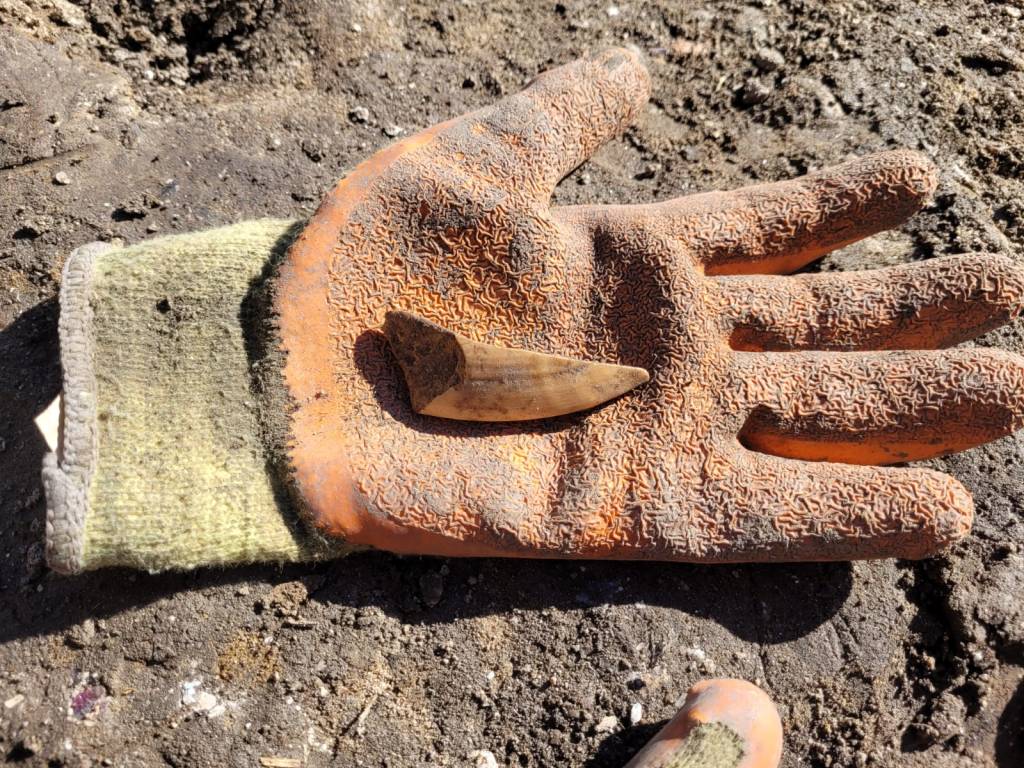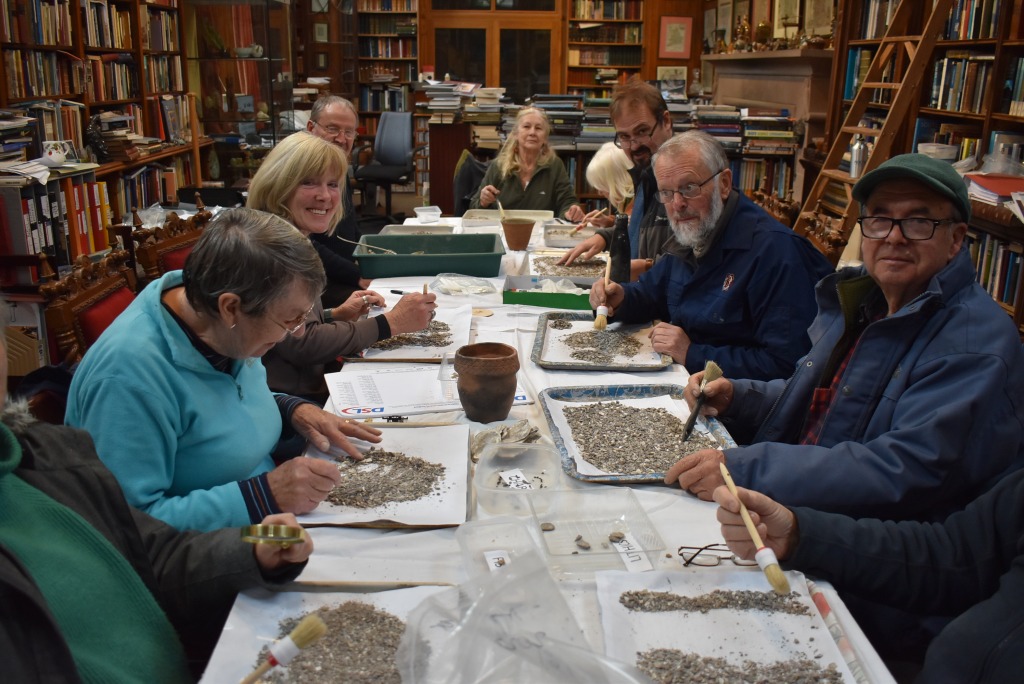by Eric Grant
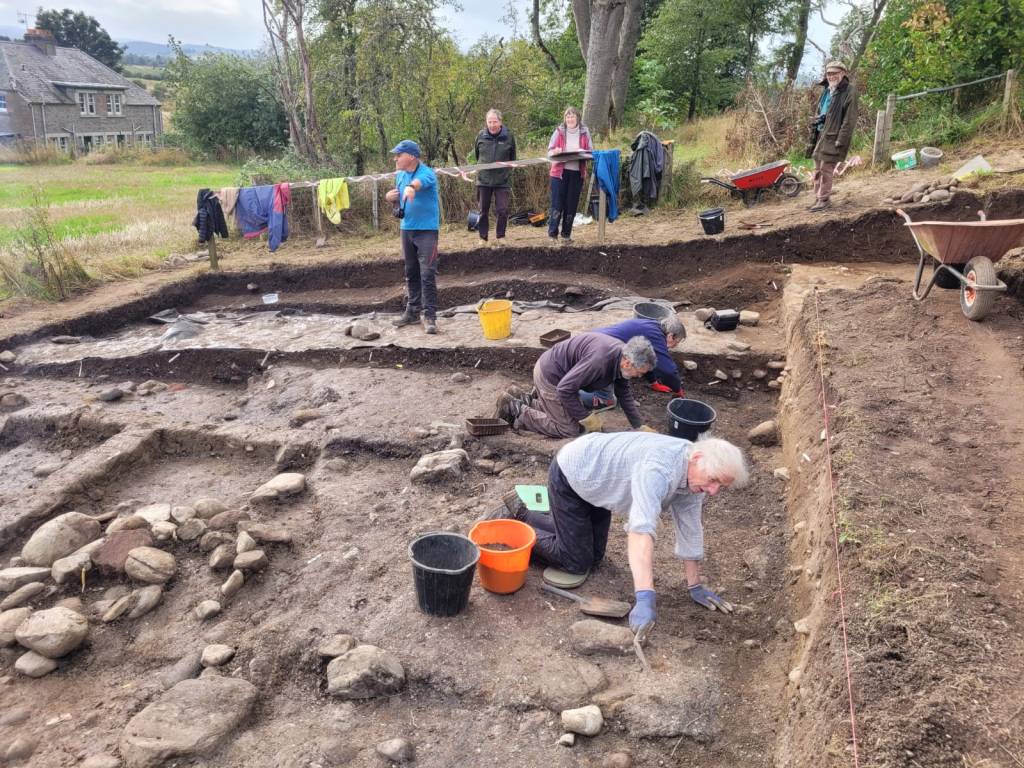
In 2017 the Tarradale Through Time project excavated a shell midden (known as site 2B) located on a raised beach terrace at the foot of a palaeo-cliff about 150 m south-east of Tarradale House, see previous blog post. In September to October 2023 the site was revisited by the Tarradale Archaeological Team in order to continue the earlier investigation. The original 2017 excavation trench was approximately 8 m x 6 m and revealed a complex sequence of marine shell midden deposits comprising mussel, cockle, periwinkle, oyster, whelk along with animal and fish bones. A number of possible struck quartz flakes and worked flint was also found within the midden but compared with shell midden excavations in other parts of Scotland, site 2B was lithic poor. Several significant worked bone and antler artefacts were recovered from the shell midden including the remains of two antler T-axes and a fragment of a biserial antler harpoon.

A series of radiocarbon dates from the 2017 excavations gave results between 4832 and 3643 cal BC. This range of more than 1000 years suggests that the site had been occupied, if not continuously, at least regularly, from the Mesolithic into the early Neolithic period. A number of stone settings was found within the excavated area and on the east side of the trench an underllying spread of cobbles and sandy gravel was interpreted as the original raised beach surface. Owing to lack of time in 2017, the western side of the trench was not excavated to the same depth, so the excavations in 2023 had the primary objective of removing the remaining shell midden deposits and evaluating the underlying deposits and any potential structures. It is apparent that the shell midden site had been disturbed through the ages by agricultural activity forming rig and furrow and the only reason that site has survived to the present is that it is bounded on one side by a fence and on the north by the palaeo-cliff, making it impossible for larger agricultural machines to plough the area. If this had not been the case the site would have been totally destroyed. Indeed, a considerable area to the south of the surviving site has been severely truncated by ploughing.
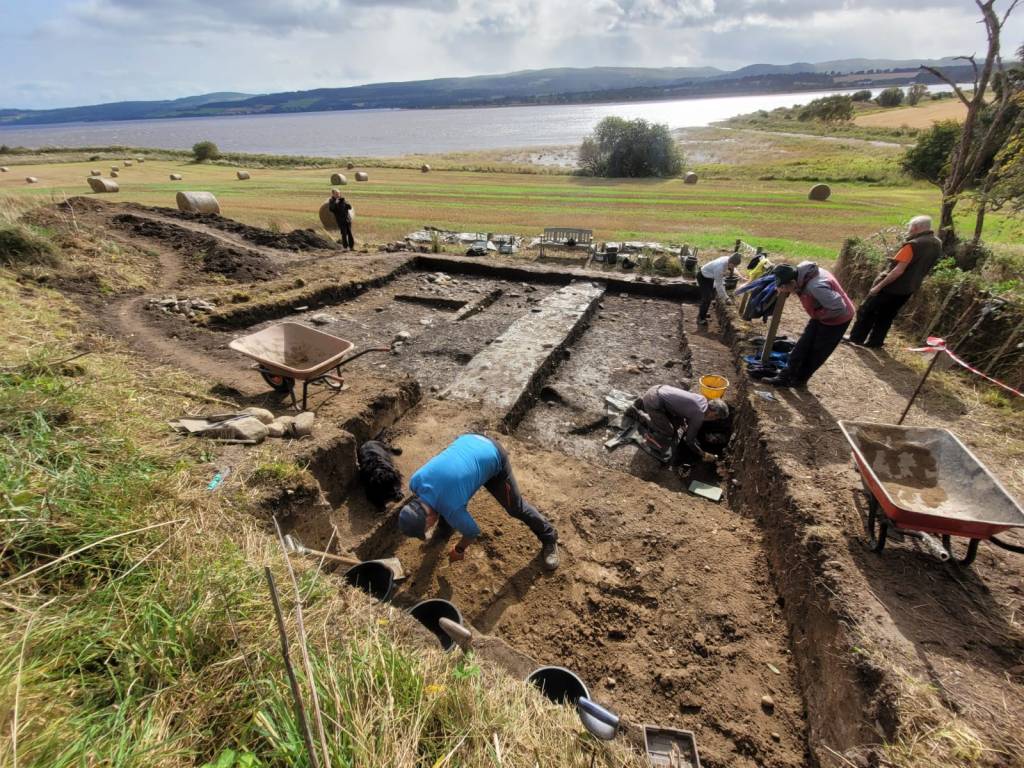
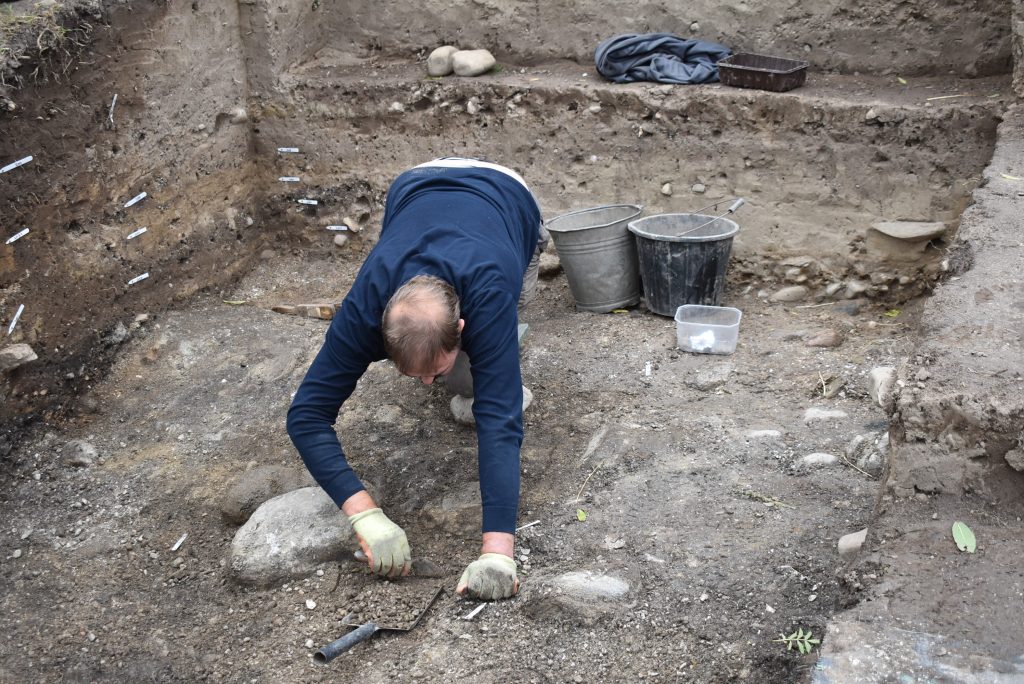
The 2023 excavations targeted the archaeological deposits and features identified in 2017 but also included a new trench extension to the north-west to investigate the relationship between the exposed midden deposits and the adjacent steeply sloping bank of the palaeo-cliff that bounds the site on the north. Excavation of the midden deposits was carried out using a 100% sampling strategy based on 1 m grid squares and 100 mm spits within contexts. Initial hand excavation revealed almost half of another antler T-axe and other pieces of worked antler, bone and teeth. Wet sieving was carried out on all the excavated material from the shell midden (context 204) in order to recover small artefacts and ecofacts, and that included fragments of bone and antler, fishbones, land snails, charcoal and lithics. Three samples of bone and antler were sent for radiocarbon dating, the results of which are still awaited.
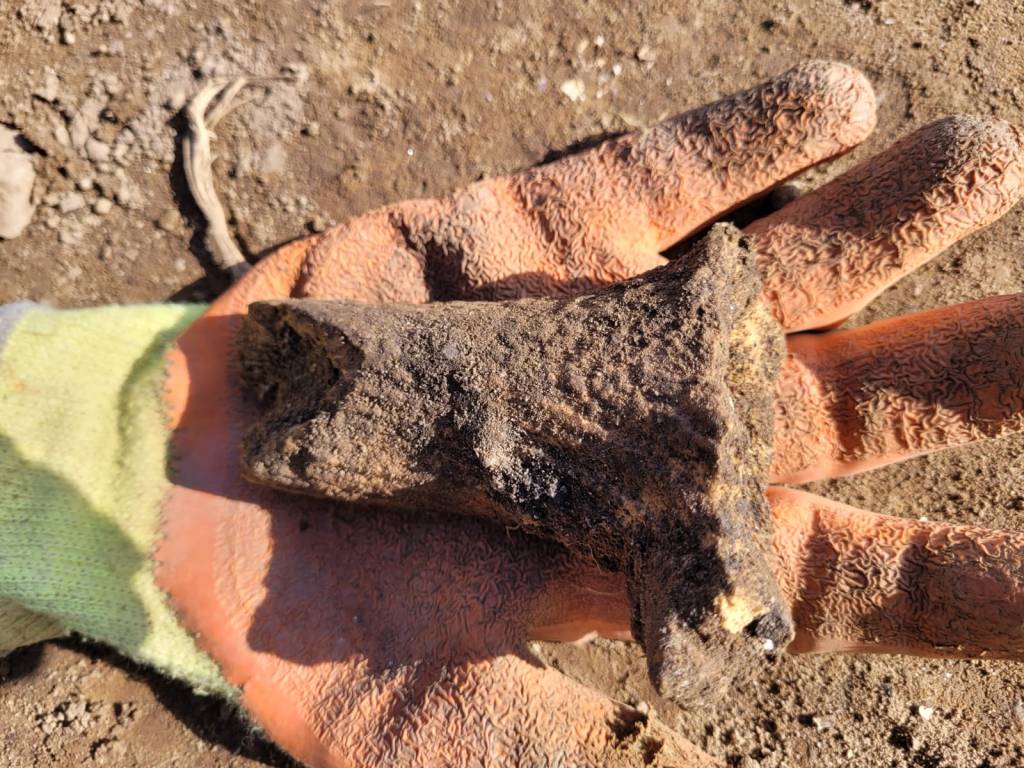

The excavation of the Tarradale 2B shell midden site has made an important contribution to our understanding of the mesolithic and in particular the late mesolithic in northern Scotland. The recovered artefacts are of national if not international importance and the three T-axes found so far represent half the total known from Scotland. Because flint is scarce in the area there was dependence on quartz for lithic tools, although struck quartz is found in relatively small numbers. Perhaps that led to a greater dependence on bone and antler tools that (in addition to the T-axes and harpoon) included a hollowed-out antler tine for a handle, various worked bone points and possibly an antler pick as well as boar canines and tusks modified as chisel-ended tools. Most of the mammals represented including aurochs, wild boar, red and roe deer, and pine marten, are primarily woodland species and it might be supposed that the surrounding land was covered by trees, as has been suggested for most of the lower-lying ground of the British Isles during this period. However, the people at Tarradale had access to a wider range of resources including the waters of the Beauly Firth, the marginal marshy interface between land and sea, and freshwater rivers such as the Beauly. Here, gathering shellfish, trapping, fishing for marine fish, the hunting of sea birds and waders and their eggs, and fishing for migratory fish, all provided a varied and wild resource for exploitation. In addition, the natural stranding of marine cetaceans and hunting of seals, which still haul out on the mudflats of the firth today, would have provided food, skins, and other valuable materials such as oil.
